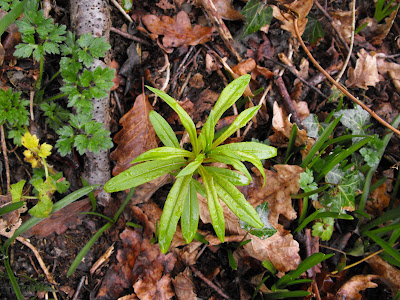Here are Polypody Ferns growing on one of the trees along by our river.

In these parts we generally have good air quality, and proof of this is in the ferns growing on the trees (so I have heard). These Polypody ferns grow readily on oak, ash and any tree offering bark rough enough for it to find a home. The rough fissured bark collects dust and decaying leaves and rainwater, and the epiphytes soon take advantage of this, and the humous offers these perching ferns a home. They are lodgers rather than parasites. My book states: "During a spell of dry weather the absorption of moisture by their roots slows down or for the time being is suspended. But when there is a spell of wet weather, the rain streaming dwn the upper surface of the trunk and boughs cleanses the bark, and as it travels lower and lower brings down particles of dust which have been blown into the fissures by the wind. All soluble matter is in this way caught up and dissolved in the downward progress of the rain and is carried along together with the less readily soluble particles mechanically held in suspension, and ultimately deposited in the larger cracksl, where the Ferns have found lodgment, so that the requisite water and humus reaches them. Thus these perched plants are provided with all the necessitives for sustaining life and vigorous growth without contact with the soil at the foot of the tree." I am sure there is a much shorter way of putting that though!

A close-up of the Polypody fern amongst hazel and blackthorn saplings on a mossy bank.

















































